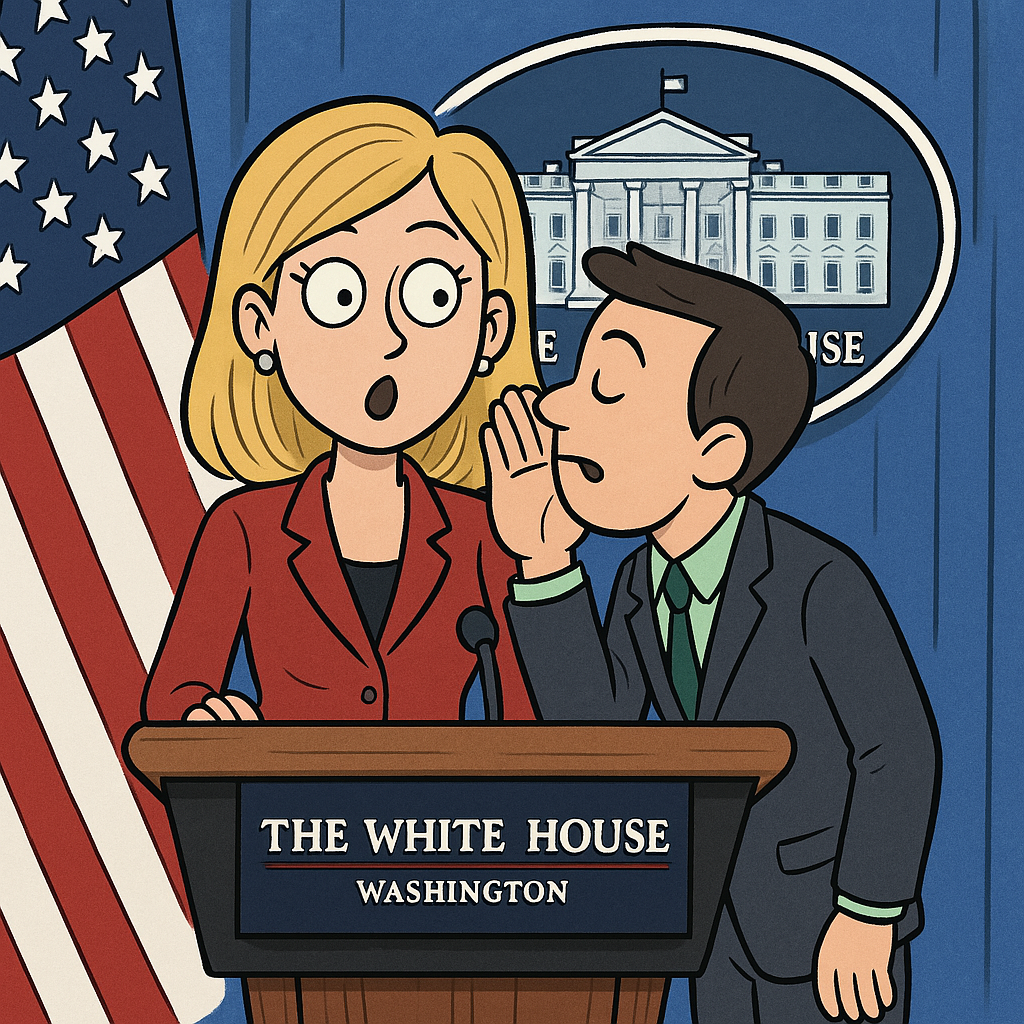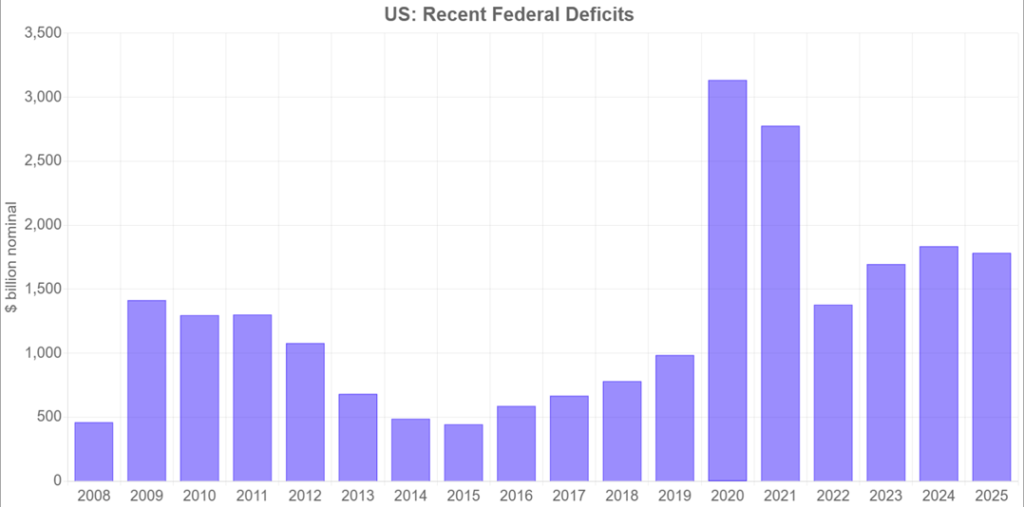
White House Press Secretary Karoline Leavitt recently made some dire comments about the county going bankrupt and ceasing to exist. Here are her words from yesterday (March 31):
“President Trump’s entire cabinet is trying to save democracy. The United States of America will cease to exist. Our Government will fail if we continue to go down the road of bankruptcy that we have been heading on for decades.”
Leavitt went to to charge that the United States has been “spending trillions of trillions of dollars” on “wasteful and useless priorities that don’t suit the American people’s interest . . . those days are over” and that it is “a new day in America.”
Leavitt pretty much put her foot in her mouth by trying to give Trump credit for fixing a problem he is largely responsible for compounding. Let’s see why. It’s a simple matter of looking at charts that show federal spending and federal deficits going back around 20 years.
Federal Spending 2007-2025
Here’s a graph of federal spending, going back to the 2007 fiscal year (FY). Take a look and think about what you see.

I’m betting the first thing you see is the huge increase in spending in FY2020 (which was October 1, 2019 to September 30, 2020). This was during Trump’s term. The huge increase in spending was due to the Covid-19 pandemic, including emergency health spending and stimulus packages. I doubt whether Americans would call this spending for “wasteful and useless priorities.”
But let’s go back before we again go forward. As you can see, spending went up a bit in 2007 and 2008, but appears to jump in 2009. This was due to the Great Recession that was triggered at the end of George Bush’s term. Both Bush and Barack Obama spent heavily to revive the economy and save American businesses from going under.
But from 2009 on, you’ve got to admit, spending was relatively flat until the end of Obama’s term in January 2017. And, spending was relatively flat during Trump’s first 3 years (2017, 2018, and 2019). I’m not sure how Leavitt argues this is going “down the road of bankruptcy that we’ve been heading on for decades.”
But I’m sure my conservative friends will point out that spending continued to be very high in FY’s 2021, 2022, and 2023. Wasn’t this all on Biden? And surely the pandemic emergency was over. Let’s take a look.
Spending in FY 2021 (October 1, 2020 to September 30, 2021) is attributable to both Trump and Biden. A major stimulus package of $900 billion was passed in December 2020, under Trump. Another major package (the $1.9 trillion American Rescue Plan Act) was passed under Biden in March of 2021. Thus, both presidents bear responsibility for FY 2021 spending. Republicans argue Biden’s stimulus spending was unnecessary by the spring of 2021. But during this time many countries around the world were still enacting stimulus packages. Again, we could have a debate whether this spending was for “wasteful and useless priorities.”
Also, we see that spending ticked down a bit in 2022 and 2023. And, we should recognize that spending for 2025 belongs mostly to Trump (January 20, 2025 to September 30, 2025) and only partly to Biden (October 1, 2024 to January 19, 2025).
Federal Deficits 2008-2025
Now, let’s look at how much the federal government annually ends up in the red going back roughly 20 years. The deficits displayed reflect how much spending exceeded the amount of revenue available each year.

You can see the deficit in 2008 was just under $500 billion, but in 2009 it jumped to $1.4 trillion. This, again, was due to the Great Recession of 2007-09. During this time unemployment skyrocketed, tax revenues plummeted, and stimulus packages were enacted to help Americans, American businesses, and the economy.
But as you can plainly see, annual deficits started to decline in 2010, and by 2014 were back around the level of 2008. Then, during the first three years of Trump’s term (2017, 2018, and 2019), deficits began to climb again, getting to nearly $1 trillion in 2019. It simply cannot be argued that Trump was reducing federal spending and deficits during his first three years in office.
Then, in 2020, annual spending spiked more that $3 trillion above the level of revenue available. This was all Trump’s deficit, and it was mostly due to the Covid-19 emergency. Is Karoline Leavitt correct that most Americans view this as deficit spending on wasteful and useless priorities?
Finally, annual deficits began to decline a bit in 2022, 2023, and 2024. And the 2025 deficit mostly belongs to Trump.
Conclusion
Under both Republican and Democratic presidents, and under control of Congress by Democrats and Republicans, the United States historically spends more than the amount of revenue it collects. We almost always have at least a modest Budget deficit each year. But these deficits soar when we encounter recessions, wars, and emergencies such as the Covid-19 pandemic. We simply do not budget for these exigencies. And it’s debatable that most Americans would view spending for these exigencies as “wasteful and useless priorities.”
Press Secretary Karoline Leavitt is both naïve and deceitful in arguing that Trump and his Administration are going to eliminate deficits, save democracy, and prevent the country from going bankrupt. Trump himself has a record of huge deficit spending and contributing heavily to the $36 trillion national debt. The tax package he and his Republican colleagues intend on enacting will involve huge deficit spending and require the country’s debt limit to be increased. The American people are being hoodwinked, and our fiscal problems are going to be worse than ever under Trump’s watch.
Leave a Reply